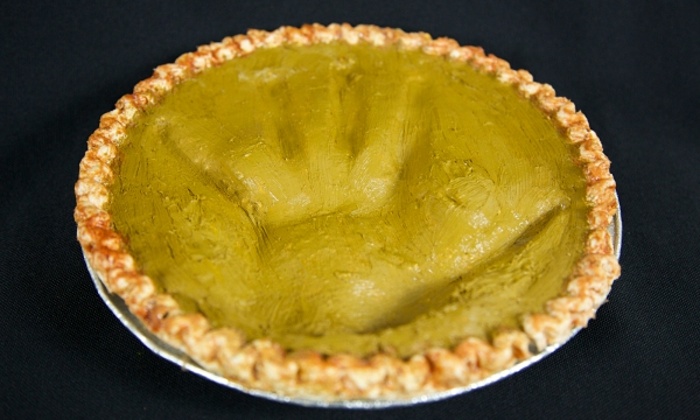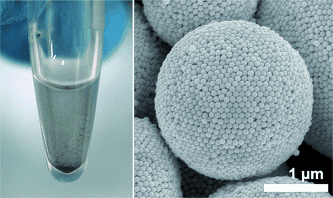Titan Spine, a medical device surface technology company focused on developing innovative spinal interbody fusion implants, today announced the appointment of Jim Sevey as the Company’s Senior Nanotechnology Specialist. The appointment follows the Company’s receipt of 510(k) clearance from the U.S. Food and Drug Administration (FDA) to market its Endoskeleton® line of interbody fusion implants featuring its next generation nanoLOCKTM surface technology and precedes the Company’s full commercialization of the new line, planned for the fourth quarter of this year. The nanoLOCK™ surface represents the only FDA-cleared nanotechnology for spinal implant applications.
Mr. Sevey’s role will include leading the educational initiatives to further demonstrate and communicate the scientific evidence supporting the advantages of Titan Spine’s unique nanoLOCKTM surface technology. The surface features an increased amount of nano-scaled textures that result in the up-regulation of a greater amount of osteogenic and angiogenic growth factors critical for bone growth and fusion as compared to PEEK and the company’s current surface.1
Kevin Gemas, President of Titan Spine, commented, “As our body of science continues to grow, we identified the need to bring onboard someone of Jim’s caliber to educate the spinal surgeon community and our sales force on the science and associated benefits of our current and nanoLOCK™ proprietary surface technologies. With more than 22 years of experience with medical devices and biomaterials, Jim is the right person to lead these efforts. One of Jim’s initial tasks will be to clearly differentiate the science of our nanotechnology platform from those that claim to have nanotechnology but have not been cleared by the FDA to do so. We are proud to add Jim to our ever-growing scientific team.”
Barbara Boyan, Ph.D., Dean of the School of Engineering at Virginia Commonwealth University, and lead author of several studies supporting Titan Spine surfaces, added, “The spine industry is beginning to recognize ‘nanotechnology’ as more than a marketing concept and now as a design approach that has the potential to improve spinal fusion results for patients. Titan Spine has been at the forefront of this charge for nearly a decade, conducting studies to evaluate and refine the benefits of nanotechnology for interbody fusions. I look forward to working closely with Jim to further these efforts.”
Before joining Titan Spine, Mr. Sevey held several positions at Synthes/Depuy Biomaterials, including most recently, Manager, Biomaterials Technical Specialist. In this role, he generated multidivisional sales of osteobiologic product lines by providing clinical and technical consulting, training, and education for surgeons, residents, operating room personnel, and sales consultants. Prior to Synthes/Depuy Biomaterials, Mr. Sevey was part of the founding team of Skeletal Kinetics, LLC, (Cupertino, CA) as Director of Marketing. Mr. Sevey holds a Bachelor of Science in Health Science from St. Mary’s College of California (Moraga, CA).
The full line of Endoskeleton® devices features Titan Spine’s proprietary implant surface technology, consisting of a unique combination of roughened topographies at the macro, micro, and cellular levels. This unique combination of surface topographies is designed to create an optimal host-bone response and actively participate in the fusion process by promoting the up-regulation of osteogenic and angiogenic factors necessary for bone growth, encouraging natural production of bone morphogenetic proteins (BMPs), down-regulating inflammatory factors, and creating the potential for a faster and more robust fusion.2,3,4
About Titan Spine
Titan Spine, LLC is a surface technology company focused on the design and manufacture of interbody fusion devices for the spine. The company is committed to advancing the science of surface engineering to enhance the treatment of various pathologies of the spine that require fusion. Titan Spine, located in Mequon, Wisconsin and Laichingen, Germany, markets a full line of Endoskeleton® interbody devices featuring its proprietary textured surface in the U.S. and portions of Europe through its sales force and a network of independent distributors. To learn more, visit www.titanspine.com.
Titan Spine Study References:
1 Olivares-Navarrete, R., Hyzy, S. L., Berg, M. E., Schneider, J. M., Hotchkiss, K., Schwartz, Z., & Boyan, B. D. Osteoblast Lineage Cells Can Discriminate Microscale Topographic Features on Titanium–Aluminum–Vanadium Surfaces.Ann Biomed Eng. 2014; 1-11.
2 Olivares-Navarrete, R., Hyzy, S.L., Slosar, P.J., Schneider, J.M., Schwartz, Z., and Boyan, B.D. (2015). Implant materials generate different peri-implant inflammatory factors: PEEK promotes fibrosis and micro-textured titanium promotes osteogenic factors. Spine, Volume 40, Issue 6, 399–404.
3 Olivares-Navarrete, R., Gittens, R.A., Schneider, J.M., Hyzy, S.L., Haithcock, D.A., Ullrich, P.F., Schwartz, Z., Boyan, B.D. (2012). Osteoblasts exhibit a more differentiated phenotype and increased bone morphogenetic production on titanium alloy substrates than poly-ether-ether-ketone. The Spine Journal, 12, 265-272.
4 Olivares-Navarrete, R., Hyzy, S.L., Gittens, R.A., Schneider, J.M., Haithcock, D.A., Ullrich, P.F., Slosar, P. J., Schwartz, Z., Boyan, B.D. (2013). Rough titanium alloys regulate osteoblast production of angiogenic factors. The Spine Journal, 13, 1563-1570.
It’s unusual (and welcome) to see citations included with a business news release for a new medical device.
I didn’t think to pose the query in my last post but I wonder if Barbara Boyan has some sort of financial interest in Titan Spine? Her Virginia Commonwealth University faculty webpage suggests the answer is no,
Still, I wish there was a statement that spelled out Boyan’s relationship or lack of with Titan Spine.


![Figure 1: Reporting Diagram for Nanomaterials [downloaded from: http://www.ec.gc.ca/ese-ees/default.asp?lang=En&n=AACFB2C0-1]](http://www.frogheart.ca/wp-content/uploads/2015/07/CanadaReportingDiagramForNanomaterials.jpg)